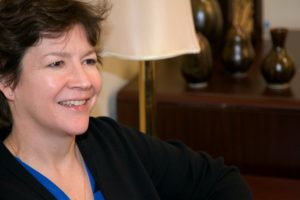News & Stories
What professors REALLY do

Jennifer Conrad
When I got my first job as an academic, of course I told my family – and they were very happy that I was employed. Every one of them asked what I would be teaching, and I told them that I would be teaching two classes per semester. They asked how much time “in class” that would be, and I said about six hours per week. There was about a four-beat pause and then they invariably asked, “What do you do the rest of the time?”
Other than the generic answer – “research” – I didn’t know how to answer that question. Here is my after-the-fact attempt.
Teaching
The first big category of time is teaching classes – and the largest use of time for me is content. That means preparing or refreshing the class notes and syllabus. Even for classes that I’ve taught multiple times, this involves re-thinking and, perhaps, re-learning some of the material. In part, that’s because good questions come up in a class, which I’ll note and need to answer before I teach it again. In part, it’s because of current events – such as the financial crisis – and I’m on the look-out for good examples.
Elements of teaching include:
- Course management – Meeting with students (either physically or virtually), grading and coordinating with other faculty members (particularly important in the core courses).
- “Theater” – Some professors spend a huge amount of time on their slides. I am not one of those people – but the last time I re-did all of my course slides, it took me about three weeks. I imagine some people do that fairly frequently. For some people, it’s like producing a movie every year, semester or module.
- People – Once students know you, you might do informal advising – about classes, careers, graduate schools and other assignments. They ask you to write letters of recommendation. There also are extracurricular events, like bartending at fundraisers or attending student-organized conferences. And there is meeting with former students (who are hopefully doing well!).
Research
For me, trying to keep current on what other people are writing has been impossible. I have to pick and choose, and it seems to me that the soda straw that I am looking through gets narrower every year.
This effort includes learning about new datasets, new methods or new pieces of software, thinking of new projects and reading others’ papers. Then there is talking with co-authors, data work, writing, revising, submitting, getting back a response from the journal and then “rinsing and repeating” everything in this list several times, usually for multiple projects at a time. This is followed – if you’re lucky – by the publication of a paper. With acceptance rates in top journals at just 5-10 percent, research is one of the most fun/frustrating/challenging/rewarding things that we do.
This category also includes refereeing others’ papers, editing academic journals, serving on academic program committees and going to seminars here, traveling to conferences there and presenting seminars elsewhere.
There is a strong “people” component for research, as well – and, to some extent, we get to choose our audience(s) here, which can be other academics, practitioners, policymakers or some mix of these. In most cases, the writing – and, to some extent, the topics – are driven by the audience to whom you’re speaking. And the choice of audience will be driven by the incentives in the institution, as well as the preferences of the academic.
Service
At UNC Kenan-Flagler, we start with internal service. In the life of a chair of an academic area, this includes a lot of time recruiting faculty. That means reading files, meeting and interviewing candidates, attending meetings to decide on next steps, attending seminars and more meetings. In the life of the School, after a professor receives tenure there are even more meetings – including committees on programs, strategy or initiatives, and faculty meetings on promotions/tenure.
If a professor has formal administrative roles at the School, add more meetings and more planning. As an area chair, planning might include scheduling, more concentrated work on recruiting and mentoring, and area chair meetings. As an associate dean for an academic program, add even more meetings – with staff, area chairs, other program deans and prospective, current and former students.
Service external to the School but internal to the University shows some real dispersion, depending on your role and interests. I’ve been on task forces related to tenure, child care and now committees related to diversity. We have the range of interests you would expect from a large service organization.
What else?
One thing that might surprise people is how much we benchmark against our peers. We analyze and compare research productivity, program statistics, rankings, curricula, size, composition, teaching loads – everything.
And of course, there’s the email.
By Jennifer Conrad, the Dalton McMichael Distinguished Professor of Finance and former senior associate dean for academic affairs